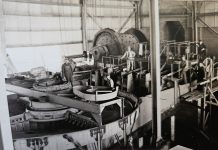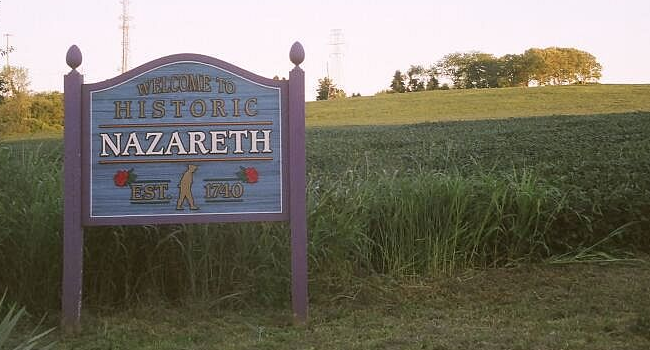
Originally published in 2002
You don’t have to travel up to New England in search of small town America, just get into your truck as I did and drive up to Chapman’s Quarries. I decided to visit there on the invitation of Mayor Harold Kocher and councilman Dana Ackerman. Dana was one of my students at Northampton High School. I am surprised he is still my friend, especially after all the assignments I heaped upon him in social studies class. I suppose Dana learned his lesson as he is giving back to the cozy community by serving on the borough council.
Entering the old “slate village” you pass the home of council member Dorothy Niklos and the former Chapman’s Schoolhouse, now owned by the Dymond family. An old brick stack abutting the quarries is a stark reminder when slate gave birth to the small borough, which makes it unique in Pennsylvania.
I was met at the quaint borough hall by Mr. Ackerman, Reverend Kenneth A. Klingborg and Mr. Clyde Roberts. In my lengthy discussion with these gentlemen, it was evident they loved Chapman’s and the fine people who reside there. Reverend Klingborg presented me with a booklet entitled “Chapman Borough and Chapman Slate Company” July 1999 by the Chapman Quarries Historical Society. The good Reverend gave me permission to use the material in this column.
Adjacent to the borough is an old cemetery, which provides a flashback to some of the original inhabitants. Mr. Ackerman recalled, “As a youth it was overgrown and we were afraid to go there. Since then, older residents have mowed the grass and it looks much better than in the past.”
The tombstones tell us of Chapman’s English origins. The few I could read tell us William Card, John Cook, Nathaniel Shamin and John Masters were born in Cornwall, England, Mary Murray in Plymouth and Elizabeth James in Sydney, Australia. The stone of Morgan Hughes is solid slate as many others. At one time the cemetery was surrounded by a four-foot solid slate wall. A few still mark the perimeter of this final resting place.
I asked Mr. Clyde Roberts if he remembered the last burial there. Mr. Roberts has a keen memory and was eager to share memories with me. He said, “I don’t recall burials here, but do remember when family members came to the old cemetery to remove some of their loved ones. Some were reinterred in other cemeteries including the Green Mount Cemetery in Bath.”
The community derives its name from Mr. William Chapman, who was born on the plains of waterloo in France. His father, who was born in Cornwall, England, was part of a company of soldiers outfitted by an English quarry owner. William was severely wounded and his wife Elizabeth traveled to France to nurse her husband. Thus, the founder of present day Chapman’s was born.
Young Chapman followed in his father’s footsteps and started to work in the slate quarries at seven years of age. It seems as though seven was a bit young to work in such a dangerous occupation.
Next time: The Chapman Slate Company









